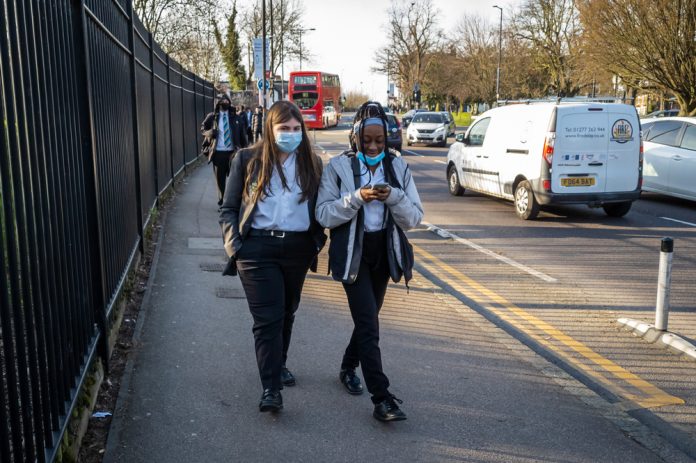Four in ten children in Central London who travelled to school by car switched to more active modes of transport, such as walking, cycling, or public transport, following the introduction of the Ultra-Low Emission Zone (ULEZ), according to new research.
Only two in ten children made this switch over the same period in Luton, the comparison area without an Ultra-Low Emission Zone.
Car travel contributes to air pollution, a major cause of heart and lung diseases, including asthma attacks. Beyond this, it limits children’s opportunities for physical activity, hindering their development and mental health and increasing their risk of obesity and chronic illnesses.
Despite UK guidelines recommending a daily average of 60 minutes of moderate-to-vigorous physical activity for school-aged children and adolescents, less than half (45%) of children aged 5-16 met these levels in 2021.
Air quality in ULEZ vs non-ULEZ zones
In April 2019, London introduced the ULEZ to help improve air quality by reducing the number of vehicles on the road that do not meet emissions standards.
According to Transport for London, the central London ULEZ reduced harmful nitrogen oxides by 35% and particulate matter by 15% in central London within the first ten months of its introduction.
The study examined data from almost 2,000 children aged six to nine years attending 84 primary schools in London and the control area, Luton. 44 schools were located with catchment areas within or bordering London’s ULEZ, and these were compared to a similar number in Luton and Dunstable.
The researchers collected data from June 2018 to April 2019, prior to ULEZ implementation, and again from June 2019 to March 2020, the year after implementation of the ULEZ but prior to COVID-19-related school closures.
Among London children who travelled by car prior to the introduction of the ULEZ, four in ten (42%) switched to active modes, while one in 20 (5%) switched from active to inactive modes.
In contrast, only two in ten (20%) children in Luton swapped from car travel to active modes, while a similar number (21%) switched from active to car travel.
This means that children in London within the ULEZ were 3.6 times more likely to shift from car travel to active travel modes compared to those in Luton, who were far less likely (0.11 times) to switch to inactive modes.
The impact of switching to active travel modes
The ULEZ’s impact on switching to active travel modes was strongest for children living more than half a mile (0.78km) from school.
This was likely because many children who live closer to school already walked or cycled to school prior to the ULEZ, and therefore, there was more potential for change in those living further away from their school.
The study’s first author, Dr Christina Xiao from the Medical Research Council (MRC) Epidemiology Unit at the University of Cambridge, said: “The introduction of ULEZ was associated with positive changes in how children travelled to school, with a much larger number of children moving from inactive to active modes of transport in London than in Luton.
“Given children’s heightened vulnerability to air pollution and the critical role of physical activity for their health and development, financial disincentives for car use could encourage healthier travel habits among this young population, even if they do not necessarily target them.”
After ULEZ was introduced in Central London, the total number of vehicles on the roads fell by 9%, and by one-third (34%) for vehicles that failed to meet the required exhaust emission standards, with no clear evidence of traffic moving instead to nearby areas.









